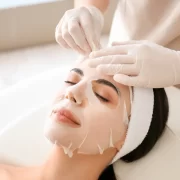Creativity comes in so many outlets, mediums, and skill levels, it’s a gift for all who let it in. Colored pencils are one of the most versatile tools, able to be used from children coloring in their favorite coloring book to adults making a living.
Pencil colors are powerful tools in the hands of an artist if they know how to use and get the most out of them. Learning the colored pencil techniques of the pros takes your art to the next level.
Here are four methods that will take your artwork from marginal to magical in minutes!
- Layering
One of the fundamental techniques of colored pencil drawing is called layering. By layering different shades in a color family or even totally different colors in some cases, the artist creates a more natural, organic, realistic final product.
With this method, the perfect shade is always just a layer away.
- Shading
You can’t discuss coloring techniques with colored pencils without talking about color pencil shading. Truly anyone can use this pressure-based technique. Each pencil becomes multi-functional, providing so much more than the single shade it appears to be.
Begin by applying light pressure to fill your space entirely. Then, layer the same color, gradually increasing pressure to create an even transition from the lightest form of the color to the darkest possible hue, creating natural depth and dimension.
- Burnishing
Unfortunately, shading often leaves works of art plagued with unwanted white spots. A perfecting technique called burnishing or colorless blending gently mixes shades together, eliminating blemishes.
So what is the mystery tool used to magically erase flaws? Believe it or not, burnishing is done with regular colored pencils sans pigment, that’s it! Sets marketed to a more professional buyer often include a few.
- Blending
Blend, blend, blend! No, we don’t mean in your kitchen.
Arguably the most crucial step of creating art with colored pencils is the finishing step of blending to soften lines and smooth the finish, giving the illusion of realism to the naked eye.
A super basic, beginner method of colored pencil blending uses a white colored pencil.
Take it a step further and use solvents, which come in the form of liquid mineral spirits and can also be purchased in the form of a marker. Brush over your finished piece, then be sure to wipe off the excess.
Voila!
Purchasing Your Pencils
There is not much of a difference between wax-based and oil-based colored pencils. That being said, it is best to learn more about the difference between wax and oil so you can make the right decision for your needs and skill level.
Different price ranges are available, but cost determines quality. Now, this doesn’t mean that you have to buy the most expensive product you can find. As a rule of thumb, aim for something budget-friendly, but don’t look for cheap.
When you invest in a professional-worthy product, not only will you notice a difference in your work, but they will last until you wear them out.
Mastering Colored Pencil Techniques
With a little practice using those simple, key colored pencil techniques and concepts, your work will be taken from basic skills to the next level. Your pieces will come alive, showing vibrancy, dimension, and depth.
Remember to check out our blog for more!













Comments